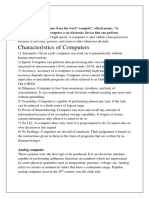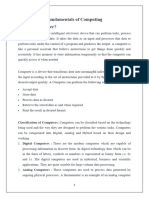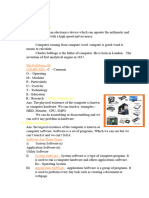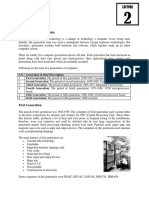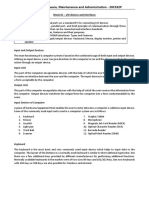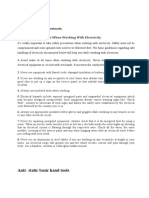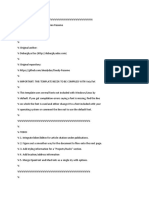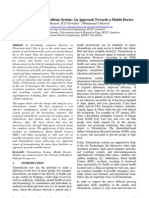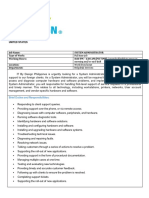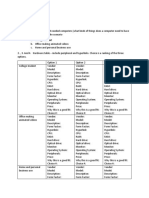0% found this document useful (0 votes)
33 views7 pagesIt Notes Week1
The document provides an introduction to computers, detailing their definition, basic components, and the five generations of computer technology from vacuum tubes to ultra-large scale integration. It also classifies computers based on size, purpose, and functionality, and explains the roles of input, output, and memory systems. Additionally, it distinguishes between system software and application software, highlighting their functions and examples.
Uploaded by
Sayyan ShaikhCopyright
© © All Rights Reserved
We take content rights seriously. If you suspect this is your content, claim it here.
Available Formats
Download as PDF, TXT or read online on Scribd
0% found this document useful (0 votes)
33 views7 pagesIt Notes Week1
The document provides an introduction to computers, detailing their definition, basic components, and the five generations of computer technology from vacuum tubes to ultra-large scale integration. It also classifies computers based on size, purpose, and functionality, and explains the roles of input, output, and memory systems. Additionally, it distinguishes between system software and application software, highlighting their functions and examples.
Uploaded by
Sayyan ShaikhCopyright
© © All Rights Reserved
We take content rights seriously. If you suspect this is your content, claim it here.
Available Formats
Download as PDF, TXT or read online on Scribd
/ 7















